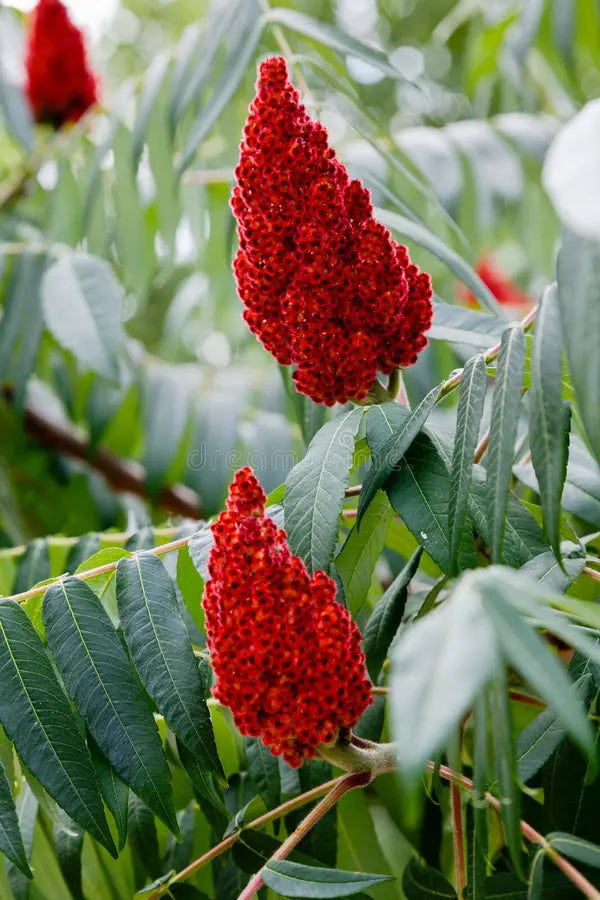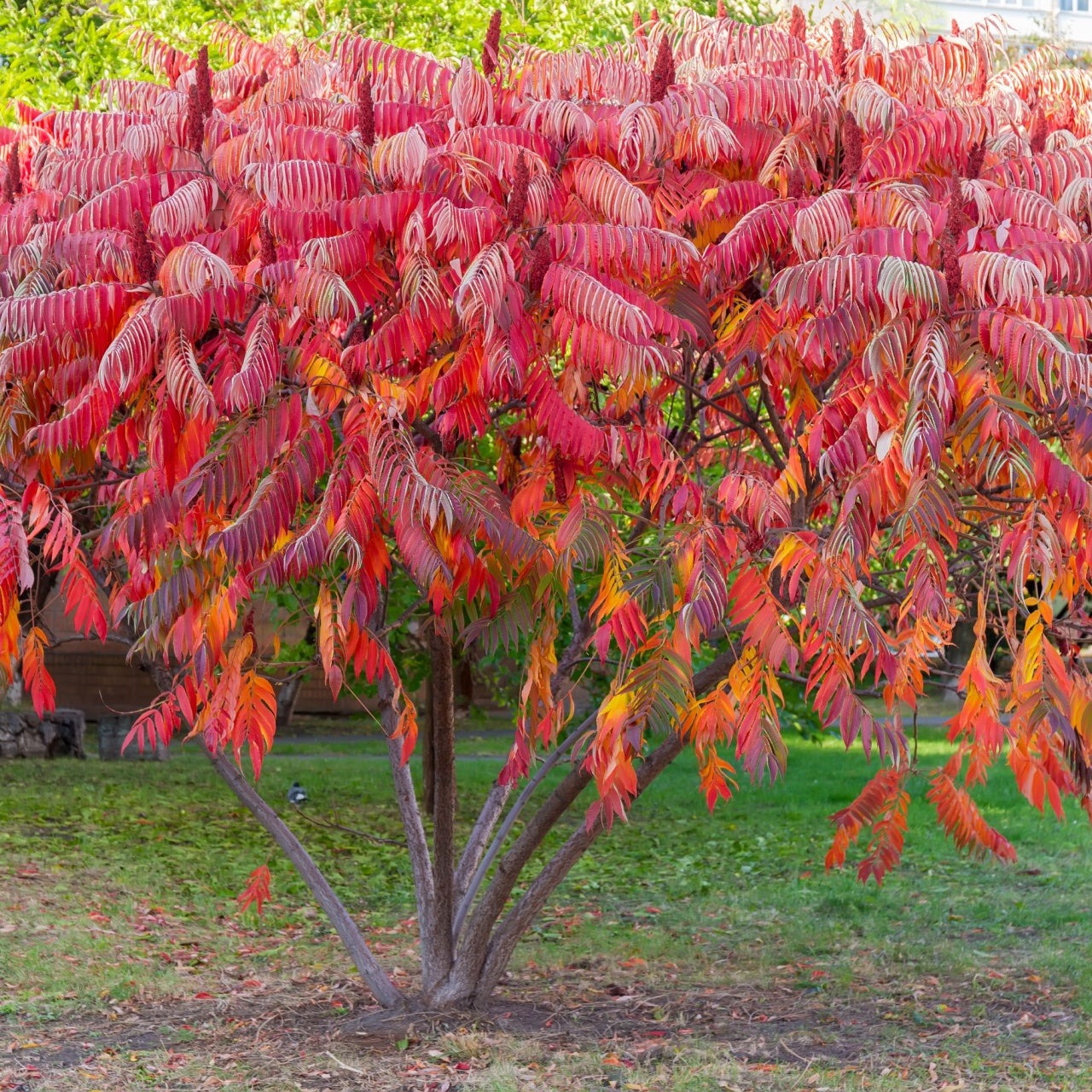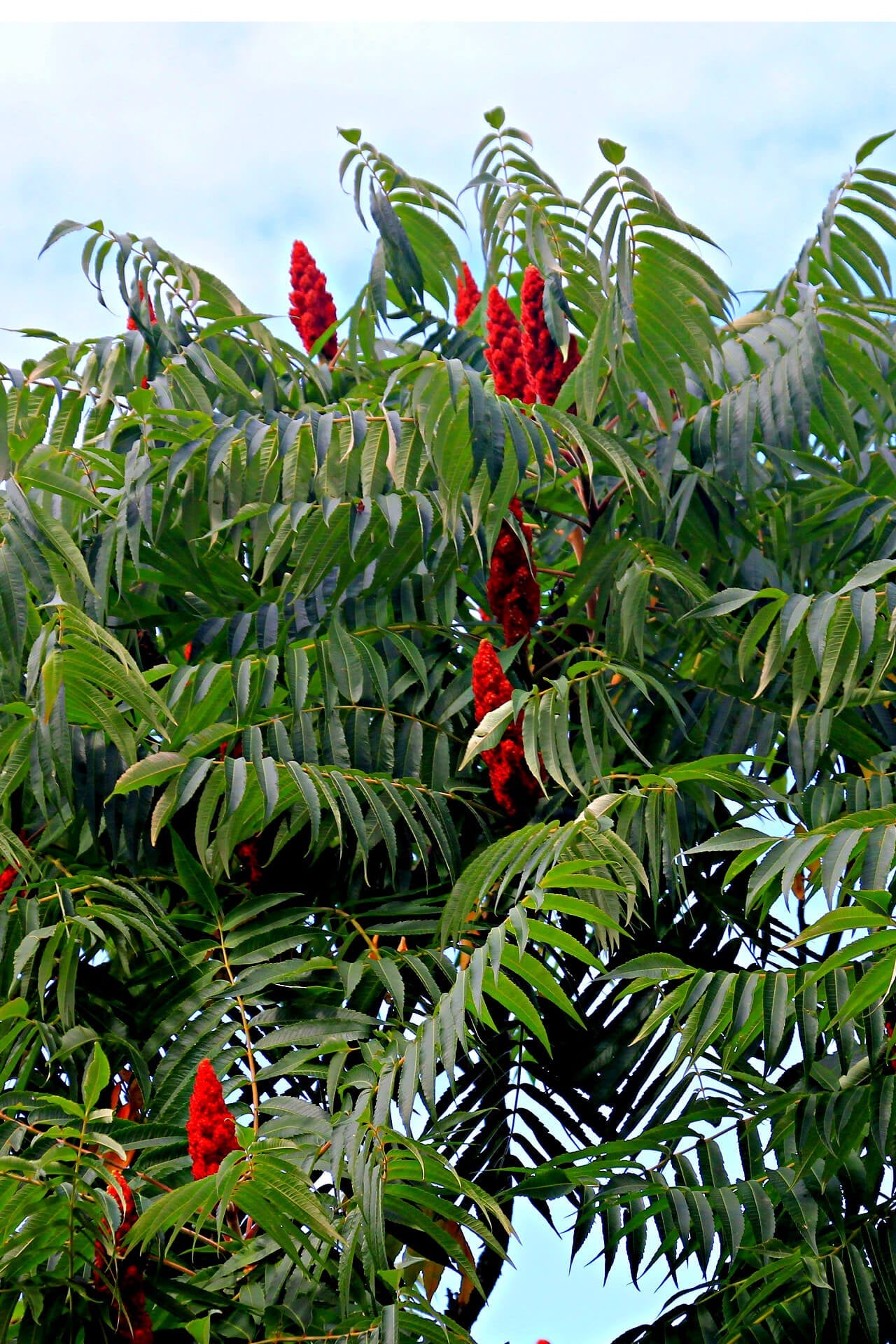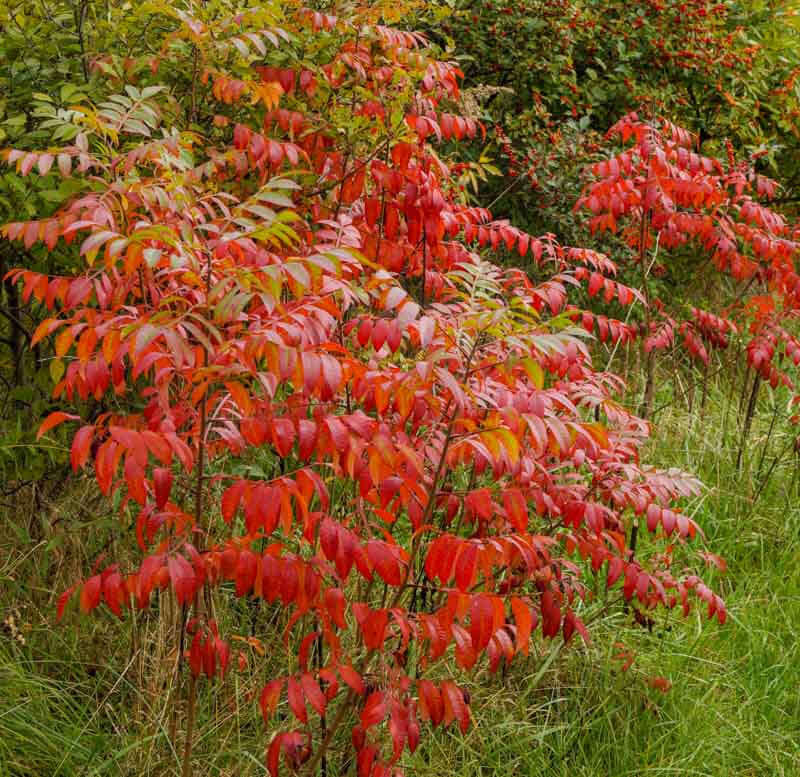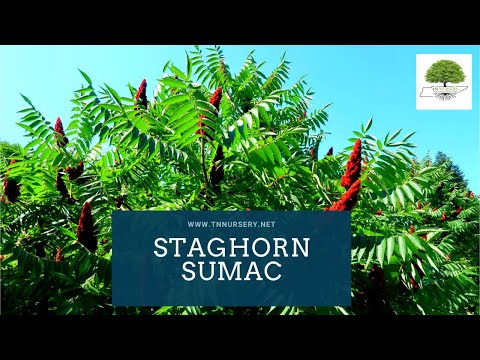Staghorn Sumac For Sale
Staghorn Sumac (Rhus typhina) is a deciduous tree known for its brilliant red-orange fall color and its vertical red berries. It is an attractive, native tree that is low-maintenance. It is a great tree to have, particularly in a bare landscape that wants to develop a small thicket of Staghorn Sumac throughout the years, as it produces root suckers.
This tree has compound green leaves. Its newest branches are covered by an almost velvety material, giving it its name, like the velvety fuzz of deer antlers.
Staghorn Sumac Plant Details
Family: Anacardiaceae
Light Requirement: Full Sun
Water Needs: Moist
Height: 20 – 35 ft.
Spread: 20 – 35 ft.
Growth Rate: Fast
Bloom Time: Spring
Flower Color: Yellow
Wildlife Value: Attracts butterflies, birds
Landscape Uses and Maintenance
This low-maintenance tree is often seen in disturbed areas such as roadsides or woodlands. These spots are great locations for you to plant your new tree! It is also great for creating a living privacy wall or hedge.
Rhus typhina plant is drought-tolerant after it is well established. Make sure to water deeply when it is first planted. This plant does not need fertilizer to grow, but can benefit from a balanced fertilizer to help its overall health. Bring the wildlife to your landscape! This tree will attract many pollinators and birds. Birds will love eating its dark red berries.
Noteworthy Characteristics
The Staghorn Sumac will attract many butterflies. This tree is a host for the Luna moth and the Spring Azure butterfly. This tree is great for supporting erosion control in locations that need more soil stability.
Exposure
Staghorn Sumac thrives best in full sun to partial shade. It prefers at least 6 hours of natural sunlight daily for optimal growth and vibrant foliage. While it can handle some shade, it will be less vigorous and may produce fewer flowers.
Height at Maturity
Under 25 Feet
Usage
Flowering
Shipped As
Bare-root
Ships
UPS
Planting Zones
3-8
